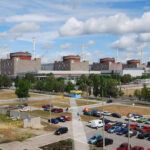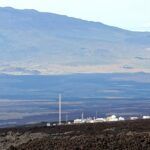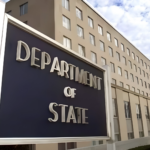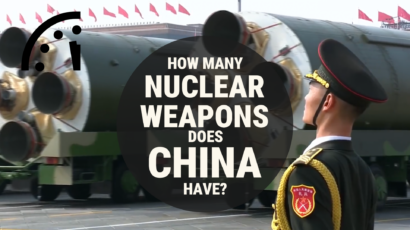Doomsday Clock moves to five minutes to midnight
By Bulletin Staff | January 10, 2012
It is five minutes to midnight. Two years ago, it appeared that world leaders might address the truly global threats that we face. In many cases, that trend has not continued or been reversed. For that reason, the Bulletin of the Atomic Scientists is moving the clock hand one minute closer to midnight, back to its time in 2007.
It is five minutes to midnight. Two years ago, it appeared that world leaders might address the truly global threats that we face. In many cases, that trend has not continued or been reversed. For that reason, the Bulletin of the Atomic Scientists is moving the clock hand one minute closer to midnight, back to its time in 2007.
Nuclear disarmament
Despite the promise of a new spirit of international cooperation, and reductions in tensions between the United States and Russia, the Science and Security Board believes that the path toward a world free of nuclear weapons is not at all clear, and leadership is failing. The ratification in December 2010 of the New START treaty between Russia and the United States reversed the previous drift in US-Russia nuclear relations. However, failure to act on the Comprehensive Test Ban Treaty by leaders in the United States, China, Iran, India, Pakistan, Egypt, Israel, and North Korea and on a treaty to cut off production of nuclear weapons material continues to leave the world at risk from continued development of nuclear weapons. The world still has approximately 19,500 nuclear weapons, enough power to destroy the Earth's inhabitants several times over. The Nuclear Security Summit of 2010 shone a spotlight on securing all nuclear fissile material, but few actions have been taken. The result is that it is still possible for radical groups to acquire and use highly enriched uranium and plutonium to wreak havoc in nuclear attacks.
Obstacles to a world free of nuclear weapons remain. Among these are disagreements between the United States and Russia about the utility and purposes of missile defense, as well as insufficient transparency, planning, and cooperation among the nine nuclear weapons states to support a continuing drawdown. The resulting distrust leads nearly all nuclear weapons states to hedge their bets by modernizing their nuclear arsenals. While governments claim they are only ensuring the safety of their warheads through replacement of bomb components and launch systems, as the deliberate process of arms reduction proceeds, such developments appear to other states to be signs of substantial military build-ups.
The Science and Security Board also reviewed progress in meeting the challenges of nuclear weapons proliferation. Ambiguity about Iran's nuclear power program continues to be the most prominent example of this unsolved problem — centrifuges can enrich uranium for both civilian power plants and military weapons. It remains to be seen how many additional countries will pursue nuclear power, but without solutions to the dual-use problem and without incentives sufficient to resist military applications, the world is playing with the explosive potential of a million suns and a fire that will not go out.
The potential for nuclear weapons use in regional conflicts in the Middle East, Northeast Asia, and particularly in South Asia is also alarming. Ongoing efforts to ease tensions, deal with extremism and terrorist acts, and reduce the role of nuclear weapons in international relations have had only halting success. Yet we believe that international diplomatic pressure as well as burgeoning citizen action will help political leaders to see the folly of continuing to rely on nuclear weapons for national security.
Nuclear energy
In light of over 60 years of improving reactor designs and developing nuclear fission for safer power production, it is disheartening that the world has suffered another calamitous accident. Given this history, the Fukushima disaster raised significant questions that the Bulletin of the Atomic Scientists' Science and Security Board believe must be addressed. Safer nuclear reactor designs need to be developed and built, and more stringent oversight, training, and attention are needed to prevent future disasters. A major question to be addressed is: How can complex systems like nuclear power stations be made less susceptible to accidents and errors in judgment?
Climate change
In fact, the global community may be near a point of no return in efforts to prevent catastrophe from changes in Earth's atmosphere. The International Energy Agency projects that, unless societies begin building alternatives to carbon-emitting energy technologies over the next five years, the world is doomed to a warmer climate, harsher weather, droughts, famine, water scarcity, rising sea levels, loss of island nations, and increasing ocean acidification. Since fossil-fuel burning power plants and infrastructure built in 2012-2020 will produce energy — and emissions — for 40 to 50 years, the actions taken in the next few years will set us on a path that will be impossible to redirect. Even if policy leaders decide in the future to reduce reliance on carbon-emitting technologies, it will be too late.
Among the existing alternatives for producing base-load electricity with low carbon dioxide emissions is nuclear power. Russia, China, India, and South Korea will likely continue to construct plants, enrich fuel, and shape the global nuclear power industry.
Countries that had earlier signaled interest in building nuclear power capacity, such as Vietnam, United Arab Emirates, Turkey, and others, are still intent on acquiring civilian nuclear reactors for electricity despite the Fukushima disaster. However, a number of countries have renounced nuclear power, including Germany, Italy, and Switzerland. In Japan, only eight of 54 power plants currently operate because prefecture governors, responding to people's opposition to nuclear power, have not allowed reactors back online. In the United States, increased costs of additional safety measures may make nuclear power too expensive to be a realistic alternative to natural gas and other fossil fuels.
The hopeful news is that alternatives to burning coal, oil, and uranium for energy continue to show promise. Solar and photovoltaic technologies are seeing reductions in price, wind turbines are being adopted for commercial electricity, and energy conservation and efficiency are becoming accepted as sources for industrial production and residential use. Many of these developments are taking place at municipal and local levels in countries around the world. In Haiti, for example, a nonprofit group is distributing solar-powered light bulbs to the poor. In Germany, a smart electrical grid is shifting solar-generated power to cloudy regions and wind power to becalmed areas. And in California, government is placing caps on carbon emissions that industry will meet. While not perfect, these technologies and practices hold substantial promise.
Yet, we are very concerned that the pace of change may not be adequate and that the transformation that seems to be on its way will not take place in time to meet the hardships that large-scale disruption of the climate portends. As we see it, the major challenge at the heart of humanity's survival in the 21st century is how to meet energy needs for economic growth in developing and industrial countries without further damaging the climate, without exposing people to loss of health and community, and without risking further spread of nuclear weapons.
The challenges to rid the world of nuclear weapons, harness nuclear power, and meet the nearly inexorable climate disruptions from global warming are complex and interconnected. In the face of such complex problems, it is difficult to see where the capacity lies to address these challenges. The political processes in place seem wholly inadequate to meet the challenges to human existence that we confront.
As such, the Science and Security Board is heartened by the Arab Spring, the Occupy movements, political protests in Russia, and by the actions of ordinary citizens in Japan as they call for fair treatment and attention to their needs. Whether meeting the challenges of nuclear power, or mitigating the suffering from human-caused global warming, or preventing catastrophic nuclear conflict in a volatile world, the power of people is essential. For this reason, we ask other scientists and experts to join us in engaging ordinary citizens. Together, we can present the most significant questions to policymakers and industry leaders. Most important, we can demand answers and action. As the first atomic scientists of the Bulletin recognized in 1948, the burden of disseminating information about the social and economic "implications of nuclear energy and other new scientific developments rests with the intelligent citizens of the world; the intense and continuing cooperation of the scientists is assured."
Few of the Bulletin's recommendations of 2010 have been taken up; they still require urgent attention if we are to avert catastrophe from nuclear weapons and global warming. At a minimum these include:
- Ratification by the United States and China of the Comprehensive Test Ban Treaty and progress on a Fissile Material Cutoff Treaty;
- Implementing multinational management of the civilian nuclear energy fuel cycle with strict standards for safety, security, and nonproliferation of nuclear weapons, including eliminating reprocessing for plutonium separation;
- Strengthening the International Atomic Energy Agency's capacity to oversee nuclear materials, technology development, and its transfer;
- Adopting and fulfilling climate change agreements to reduce carbon dioxide emissions through tax incentives, harmonized domestic regulation and practice;
- Transforming the coal power sector of the world economy to retire older plants and to require in new plants the capture and storage of the CO2 they produce;
- Vastly increasing public and private investments in alternatives to carbon emitting energy sources, such as solar and wind, and in technologies for energy storage, and sharing the results worldwide.
The Clock is ticking.
-Science and Security Board, the Bulletin of the Atomic Scientists
Editor's note: The audio recording of the January 10, 2012 news event can be found here.
Together, we make the world safer.
The Bulletin elevates expert voices above the noise. But as an independent nonprofit organization, our operations depend on the support of readers like you. Help us continue to deliver quality journalism that holds leaders accountable. Your support of our work at any level is important. In return, we promise our coverage will be understandable, influential, vigilant, solution-oriented, and fair-minded. Together we can make a difference.














